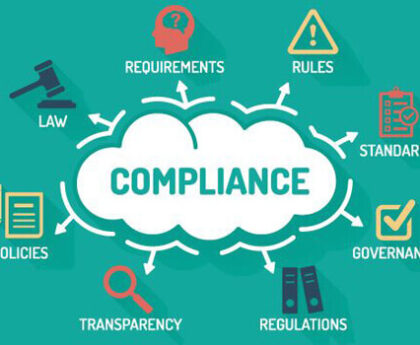Environmental, social, and governance (ESG) investing has seen tremendous growth over the past decade. As investors become more conscious of sustainability issues and seek investments that align with their values, ESG strategies provide an avenue to make a positive impact while pursuing financial returns. But what exactly is ESG investing in, and why has it gained so much momentum?
Understanding the ESG Concept
The ESG concept involves factoring environmental, social, and corporate governance considerations into investment analysis and decision making. Traditional financial analysis focuses primarily on financial data to determine the expected risk and return profile of an investment. ESG analysis broadens this perspective by examining indicators related to the sustainability and ethical business practices of companies.
On the environmental front, ESG analysis considers metrics like carbon emissions, greenhouse gas emissions intensity, water usage, waste generation, and utilization of renewable energy. The social component incorporates factors like employee welfare, diversity and inclusion, community relations, and product safety. Governance analysis looks at board structure and executive compensation, as well as transparency, corruption controls, and accounting practices.
By integrating these sustainability indicators with traditional financial analysis, ESG strategies aim to identify companies with better long-term prospects because of their conscientious management of risks and opportunities related to key environmental and social issues. The thesis is that these companies are poised to outperform over the long run.
Drivers Behind the Surge in ESG Investing
The surge in ESG investing stems from an amalgamation of multiple changing dynamics. A key driver is growing awareness of sustainability challenges like climate change, environmental degradation, and wealth inequality. ICMA noted that these systemic threats pose risks to all businesses, leading investors to seek out companies with best practices in risk management.
There is also a generational shift underway as the largest demographic cohort, millennials, begin to enter their prime investing years while driving demand for value-based investing. Armed with more access to data and insights, investors, particularly women and millennials, are increasingly questioning the externalities associated with their investments. They expect their money to align with their personal values as well as financial motivations.
Shareholder activism has also catalyzed the adoption of ESG strategies. Large institutional investors are leveraging their equity stakes to pressure companies into greater transparency and accountability on sustainability issues most material to their business. Increased scrutiny from engaged shareholders has led more companies to take proactive steps on managing ESG risks and opportunities.
Positive Impacts and Mainstreaming
Advancements in data availability have also facilitated more widespread adoption of ESG analysis. As disclosure legislation evolves, companies are providing more detailed ESG data, allowing investors to systematically incorporate the most material factors into diligence and securities analysis. Moreover, improvements in analytical techniques and frameworks enable more robust quantification of ESG criteria.
The business case for ESG continues to build with multiple studies demonstrating the favorable risk-return characteristics of sustainable investing strategies compared to traditional approaches. An analysis by the International Finance Corporation found that ESG integration resulted in higher average returns and lower risk. Additionally, a study by Oxford University showed that businesses with higher ESG scores generally showed better operational performance in the stock market.
Critically, sustainable investing is now moving into the mainstream led by large financial institutions implementing ESG methodologies. As major players like BlackRock, Vanguard, and State Street Global Advisors leverage their scale, space is gaining more standardization and credibility. Governments are also catalyzing the agenda by issuing green bonds to fund environmentally focused projects and tightening disclosure requirements around sustainability reporting.
Evolving Trends and Looking Ahead
While skepticism persists in some corners around sustainable investing frameworks, the growth trajectory reveals an undeniable shift in investor mindset and expectations. Closer scrutiny of environmental and social externalities is fundamentally altering perceptions of value and risk. There appears to be no going back from this movement towards a more ethical, transparent, and long-term approach to investing.
ESG strategies will continue to evolve from a niche concept to a critical facet of investing analysis and decision making. As more illuminating data becomes available via disclosure requirements and reporting frameworks, ESG signals will become increasingly important markers for an investment’s underlying quality and growth prospects. Far from diminishing returns, thoughtful ESG integration may soon emerge as a baseline requirement for making sound investment choices.
In conclusion, the rise of ESG investing is unveiling the formidable power of aligning financial and sustainable value creation. This transition represents a seismic philosophical shift that investment practices must continue accommodating. As the realities of resource scarcity and climate change intensify, sustainable finance can funnel much needed capital towards securing our collective wellbeing.
The Road Ahead – Opportunities and Challenges
While the growth of sustainable investing represents a positive redirection of capital towards more conscious and ethical outcomes, the road ahead remains filled with complexities. Transparent, consistent, and verifiable ESG data remains difficult for many companies to produce, leading to issues around greenwashing. Variations in reporting methodologies also reduce comparability across firms. Policy frameworks like the EU’s Sustainable Finance Disclosure Regulation (SFDR) seek to foster greater standardization and accountability.
There are also open questions regarding the best mechanisms for measuring and validating ESG performance as well as accounting for negative externalities. As data and methodological capacities improve, appropriate benchmarking frameworks must evolve in tandem to accurately gauge outputs and impacts. Issues of scope and materiality need to be fleshed out more granularly to determine what sustainability issues are most financially relevant on a sector-by-sector and company-specific basis.
While steadfast believers in pure shareholder primacy remain skeptical, the market forces behind sustainable investing’s ascent appear too strong to stall its progress. With climate risks intensifying and next-generation investors demanding ethics-based decision making, the investment practices of the future need to keep adapting. Overall, the trajectory points to sustainability factors becoming integral to prudent management and value creation across all asset classes.




